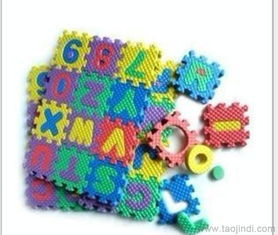玩具拼图游戏
Title: Splicing Puzzle Toy Fragments: A Curriculum Design
Splicing Puzzle Toy Fragments: A Curriculum Design
Creating a curriculum for teaching splicing puzzle toy fragments involves a blend of creativity, cognitive development, and handson learning. This curriculum aims to engage learners in the process of assembling puzzle pieces, fostering problemsolving skills, spatial reasoning, and patience. Let's delve into the components and strategies for designing such an educational plan.
Before diving into curriculum design, it's crucial to understand the target audience's age group, cognitive abilities, and learning preferences. For instance, younger children may benefit from simpler puzzles with vibrant colors and larger pieces, while older students can handle more complex designs and challenges.
The learning objectives should align with the developmental goals of the learners. These objectives may include:
- Developing spatial awareness
- Enhancing problemsolving skills
- Improving handeye coordination
- Promoting perseverance and patience

The curriculum can be divided into several components:
a. Introduction to Puzzle Concepts
Begin with an introduction to different types of puzzles and their benefits. This can include jigsaw puzzles, tangrams, and threedimensional puzzles. Discuss the importance of spatial reasoning and critical thinking in solving puzzles.
b. Handson Activities
Provide ample opportunities for handson exploration. Start with simple puzzles and gradually increase the complexity as students progress. Encourage experimentation and collaboration among peers.
c. ProblemSolving Strategies
Teach various problemsolving strategies, such as breaking the problem into smaller parts, trial and error, and using logical reasoning. Guide students in applying these strategies to solve increasingly challenging puzzles.
d. Reflective Practices
Incorporate reflective practices where students can analyze their problemsolving processes. Encourage them to discuss their strategies, successes, and challenges. This fosters metacognitive skills and selfawareness.
Utilize a mix of instructional methods to cater to diverse learning styles:
a. Demonstration
Start by demonstrating how to solve a puzzle, highlighting key strategies and techniques.
b. Guided Practice
Provide guided practice sessions where students work on puzzles with instructor support and feedback.
c. Independent Exploration
Allow time for independent exploration where students can work on puzzles at their own pace, applying the skills they've learned.
Assessment should focus on both process and product:
a. Process Assessment
Observe students' problemsolving approaches, collaboration skills, and perseverance during puzzle activities.
b. Product Assessment
Evaluate the completed puzzles based on accuracy, efficiency, and creativity.
Provide adaptations for students with diverse needs, such as tactile puzzles for visually impaired students or digital puzzles for remote learning. Offer extension activities for advanced learners, such as creating their own puzzles or exploring the mathematics behind puzzle design.
Designing a curriculum for teaching splicing puzzle toy fragments requires careful consideration of learners' needs, learning objectives, and instructional strategies. By incorporating handson activities, problemsolving skills, and reflective practices, educators can create an engaging and enriching learning experience that fosters cognitive development and critical thinking.
